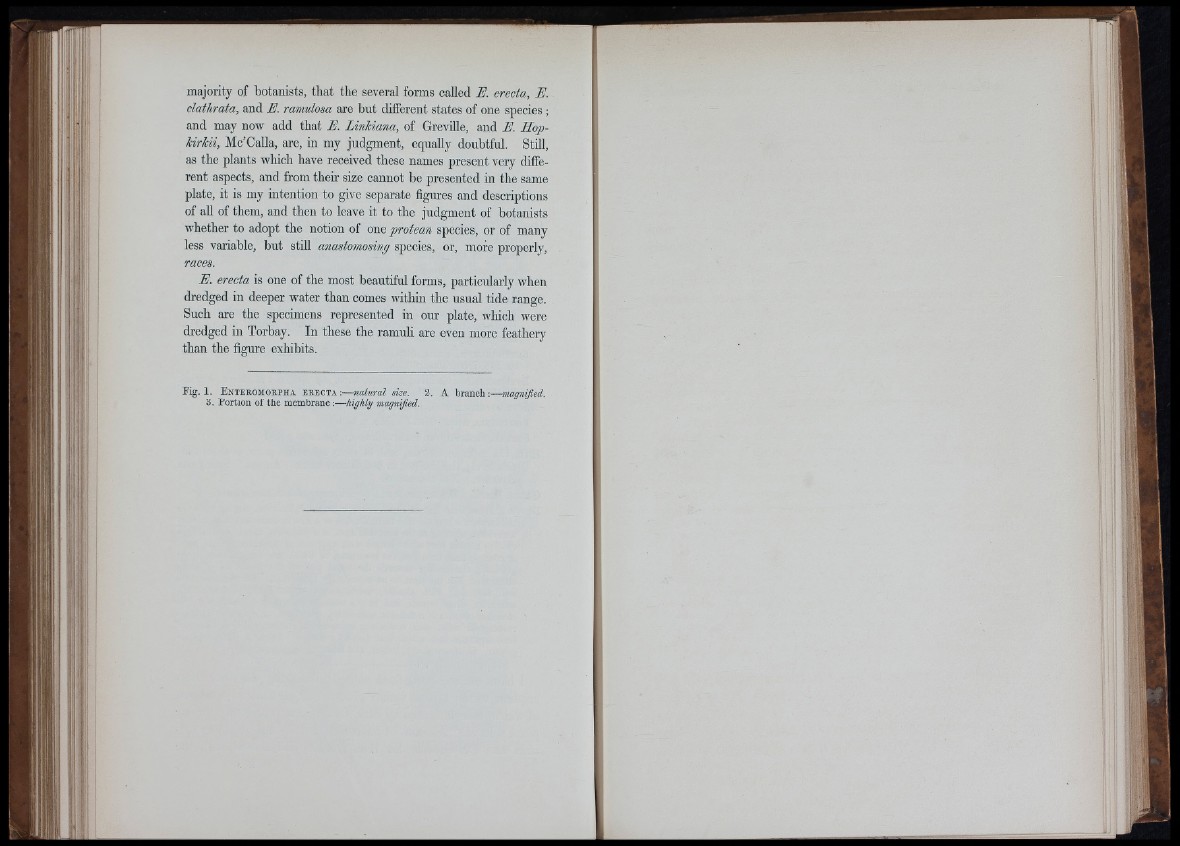
majority of botanists, that the several forms called E. erecta, E.
clathrata, and E. ramulosa are but different states of one species ;
and may now add that E. Linkiana, of Greville, and E. LIop-
kirkii, Mc’Calla, are, in my judgment, equally doubtful. Still,
as the plants which have received these names present very different
aspects, and from their size cannot be presented in the same
plate, it is my intention to give separate figures and descriptions
of all of them, and then to leave it to the judgment of botanists
whether to adopt the notion of orae, protean species, or of many
less variable, but still anastomosing species, or, more properly,
races.
E. erecta is one of the most beautiful forms, particularly when
dredged in deeper water than comes within the usual tide range.
Such are the specimens represented in our plate, which were
dredged in Torbay. In these the ramuli are even more feathery
than the figure exhibits.
Fig. 1. E n t e r o m o r ph a e r e c t a :— natural size.
3. Portion of the membrane;— highly :
3. A branch;— magnijied.
t!